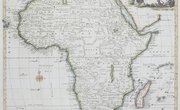"People are using GPS systems to find millions of little hidden objects throughout the world - often as simple as a piece of Tupperware hidden in the woods. You go to a website, you get the latitude and longitude to get the specific location of a certain specific hiding space, and then you go there and see if you can find it." - Ken Jennings
If you look at a globe or a map, there are lines that divide the surfaces. The prime meridian is the reference for all lines of longitude, the imaginary vertical lines that divide the Earth's surface. The opposite meridian is the 180 degree line of longitude, which is 180 degrees both east and west of the prime meridian. The 180-degree longitude line also serves as an approximate basis for drawing the international date line and is known as the anti meridian.
Longitude Definition in Geography
Lines of longitude are the imaginary, vertical lines along the surface of the Earth. The longitude lines are used as coordinates to determine locations east and west of a reference line. All lines of longitude join at the Earth's poles.
Prime Meridian
The prime meridian, also known as the Greenwich meridian line, is labeled at zero degrees and runs through Western Europe and Western Africa. It is the reference on which all lines of longitude are based. For example, 30 degrees west longitude means 30 degrees west of the prime meridian. The Earth is divided into 24 time zones with each time zone being approximately 15 degrees longitude in width. The Prime Meridian marks the Greenwich (or Zulu) time zone, with other time zones labeled plus or minus hours from this zone.
180 Degrees Longitude
The 180th degree meridian is also called the anti meridian. It is used to define the International Date Line. Because the Earth is spherical, traveling 180 degrees in either direction from the prime meridian will lead to 180 degrees longitude or the opposite meridian. The 180-degree meridian runs through the western Pacific Ocean. The international date line roughly corresponds to the 180-degree meridian, although it deviates with respect to national borders. Because the Earth is divided into 24 time zones, each plus or minus a given number of hours from Greenwich, there arises a line on the Earth where the plus and minus zones meet. By tradition, this occurs at the international date line. Traveling east across the line decreases the date by one (for example, from Wednesday to Tuesday) and traveling west across the line advances the date (Tuesday to Wednesday).
Related Articles
References
Writer Bio
David Chandler has been a freelance writer since 2006 whose work has appeared in various print and online publications. A former reconnaissance Marine, he is an active hiker, diver, kayaker, sailor and angler. He has traveled extensively and holds a bachelor's degree from the University of South Florida where he was educated in international studies and microbiology.











